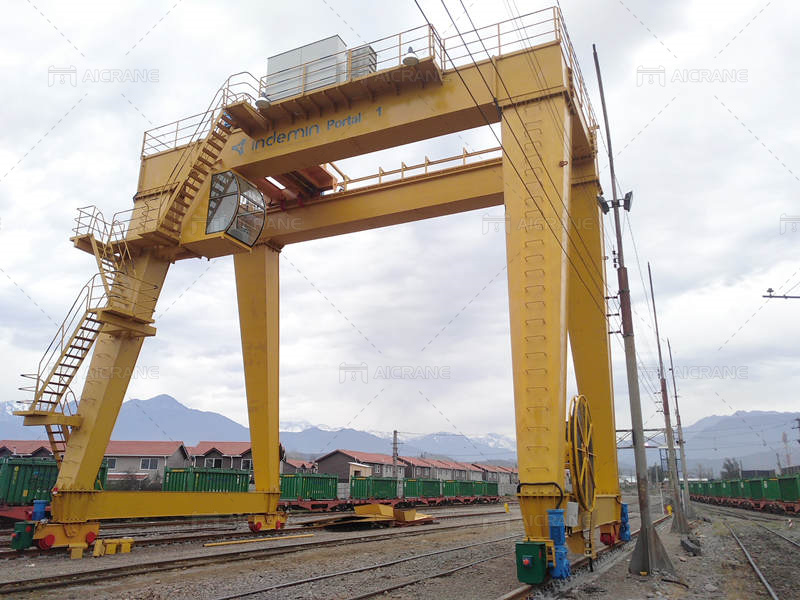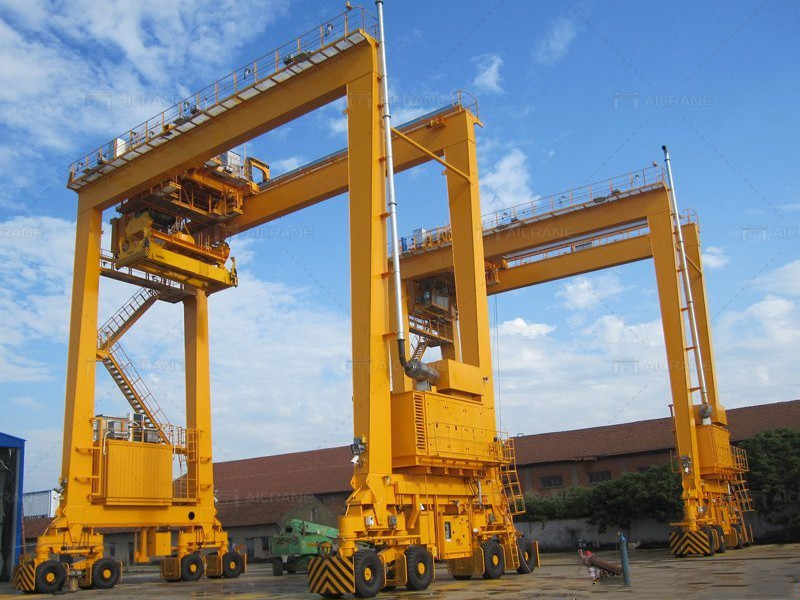Operating a gantry container is a complex task that requires precision, skill, and adherence to safety protocols. Gantry cranes are commonly used in ports and shipping yards to efficiently load and unload containers from ships or trucks. In this passage, we will discuss the key steps involved in operating a gantry container.

Preparing for Operation
Before starting any operations, it is crucial to ensure that all safety measures are in place. The operator should be trained and certified to operate the gantry crane. They should wear appropriate personal protective equipment (PPE), including a hard hat, safety vest, and steel-toed boots. Conducting a thorough inspection of the gantry crane is also essential to identify any malfunctions or defects.
Familiarizing with Controls
Gantry cranes have a variety of controls that operate different functions. The operator must become familiar with the double beam gantry crane control panel, which typically includes joysticks, buttons, and switches. Each control corresponds to a specific movement, such as hoisting, lowering, trolley movement, and gantry travel. Understanding the functions of each control is vital to ensure safe and efficient operation.
Assessing the Environment
Before commencing any operation, the operator must assess the surrounding environment. This includes checking for obstacles, ensuring proper lighting conditions, and identifying potential hazards. It is essential to maintain a clear path for the gantry crane’s movement and ensure that there are no personnel or other machinery within the operating area.
Lifting and Positioning Containers
To lift and position a container, the operator must accurately position the spreader (lifting device) over the container. The spreader is attached to the hoist by wire ropes or chains and is responsible for securely gripping the container. The spreader’s twistlocks engage the corner fittings of the container, providing a secure connection. Once properly positioned, the operator can initiate the lifting process.
Hoisting and Lowering Containers
Using the hoist control, the operator can raise or lower the container as required. It is crucial to maintain a steady and controlled lifting speed to prevent swinging or sudden movements. The operator should ensure that the container is lifted to a safe height and then carefully lower it to the designated spot. Communication between the operator and ground personnel is vital during this process to ensure precise placement.

Trolley Movement
Gantry cranes are equipped with a trolley mechanism that allows horizontal movement along the gantry beam. This enables the operator to position the container accurately on the ground or load it onto a truck or railcar. Smooth and controlled trolley movement is essential to prevent collisions and ensure the safe transfer of containers.
Gantry Travel
Gantry cranes are designed to move along rails on the ground, allowing them to cover a large operating area. The gantry container is usually is rail-mounted gantry crane. The operator controls the gantry travel using the appropriate control lever or joystick. It is important to observe the designated speed limits and be aware of any potential obstructions along the crane’s path.
Safety Considerations
Safety should always be the top priority when operating a gantry container. Operators must strictly adhere to safety guidelines, including wearing seat belts if available, maintaining clear visibility, and avoiding distractions. They should also follow proper signaling protocols and communicate effectively with ground personnel. Regular maintenance and inspections of the gantry crane are essential to ensure its safe operation.
Emergency Procedures
In the event of an emergency, operators must be prepared to take appropriate action. This may include activating emergency stop functions, following evacuation procedures, and alerting relevant personnel. Familiarity with emergency protocols and regular training sessions can help operators respond swiftly and effectively in case of unforeseen situations.
To summarize, operating a gantry container involves several critical steps, including preparation, familiarization with controls, assessing the environment, lifting and positioning containers, hoisting and lowering containers, trolley movement, gantry travel, prioritizing safety, and being prepared for emergencies. Following these steps diligently and maintaining a focus on safety will help ensure smooth and efficient gantry container operations in ports and shipping yards.